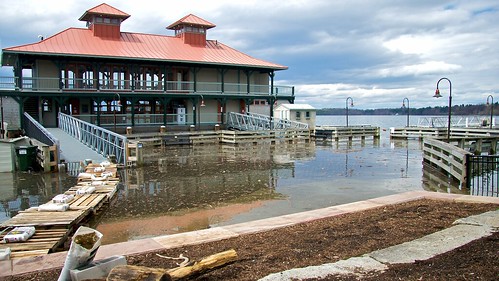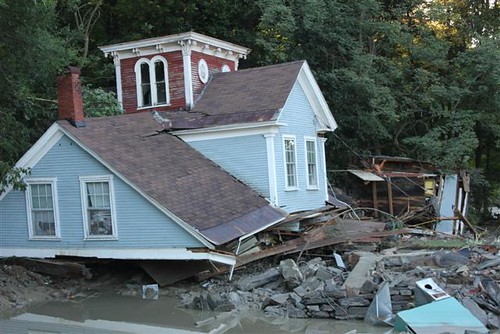Last week's post introduced the concept of building for a future of extreme weather events, or why energy performance equals building resilience. I described two buildings – "The Base" typifies common design and construction practices and is slightly better than code* and – "The Ace" which is designed well beyond code in response to issues facing building owners as well as the larger community such as the need to control building operating costs through minimizing the need for energy inputs, the desire to limit greenhouse gas emissions and providing optimum comfort to building occupants.
This week we will look at how these building are likely to perform under pressure from extreme weather events.
Event 1 – An extended and intense heat wave results in rolling brown-outs due to lack of capacity on the electric grid.
The Ace incorporates several resilient strategies that allow this building to ride through brown outs and even black outs with minimal impact on building operations, comfort and worker productivity.
- Low loads mean that minimal energy input is required to keep the building operating
- The renewable energy systems largely meet the build loads
- The gas fired generator can fire and pick up any loads that the renewable energy systems cannot carry
- The building is a net generator – feeding excess power back into the grid and improving the ability for the grid to meet the needs of the community
The Base is uncomfortable, does not have adequate lighting and loses workstations and printing during the brown-outs. Building occupants focus on these problems with major impacts on productivity and absenteeism.
- The air conditioning system compressors cannot operate during brown outs and building temperatures increase into the mid 80’s at a minimum.
- Over 50% of the building lights are shut off during brown outs
- Office loads are intermittently affected so people lose work and cannot work with confidence during brown outs
The Ace is resilient in the face of heat waves and performs similarly well in the advent of extended periods of cold and during disruptions to the regional power supply.
Event 2 – Major storm with significant winds, serious flooding and an extended power outage
The Ace – while floodwaters inundate the ground floor of The Ace, it is designed to return to service quickly with the least possible disruption and to provide services to the community in the interim.
- Operable windows allow the building to be completely opened so that removal of debris can be accomplished efficiently and natural ventilation is maximized during clean up
- The location of major equipment above the ground floor means that the main electric service has not been impacted, nor has other major equipment
- The ground floor can be electrically isolated enabling the remainder of the building to come back on line very soon after the flood waters recede. The building electrical system is fully inspected before any portion is energized. The natural gas generator enables the building to operate before power is restored to the region.
- The Ace becomes a base of operations for flood recovery efforts in the region and once services and roads are restored and the ground floor cleanup has been completed, the building rapidly returns to full occupancy within weeks of the flood.
The Base – similar to The Ace, flood waters inundate the first floor of this building, but the results are quite different.
- The main electrical service is damaged by flood waters and must be replaced
- Since the windows are inoperable, cleaning and drying the ground floor takes significantly longer than for the Ace
- Because of the delays in addressing the ground floor flooding, mold growth occurs and affects the building as a whole requiring extensive demolition of the building interior
- This building requires significant resources to rehabilitate and bring back into working order. The timeline for re-occupancy of this building is several months after the storm.
While building owners may not believe that returning a building to occupancy within weeks of a major flood is optimal, the extended unoccupied period associated with the Base scenario is not unexpected. We as design and construction professionals need to engage our clients in thinking about the potential impacts of major weather events on their buildings and operations and help them make investments that look beyond the obvious benefits of increased energy efficiency to non-energy benefits such as survivability and resiliency.






